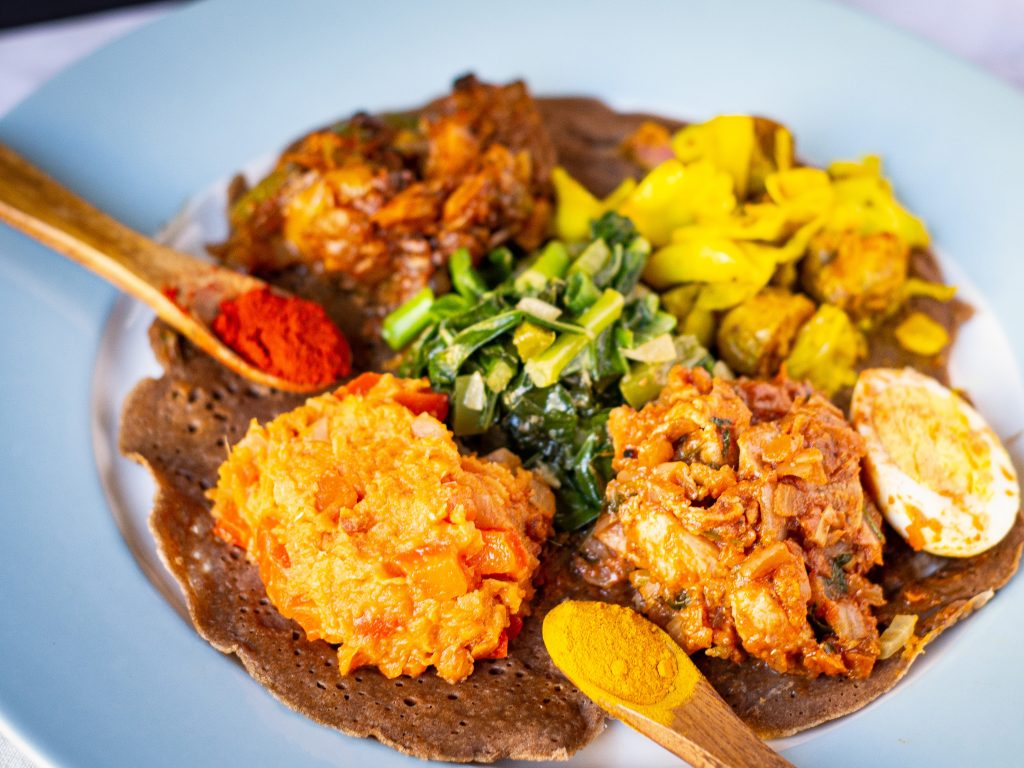
Keep reading to get to our Top 6 Ethiopian Recipes, but first, we’ll give you a quick background on Ethiopian food and a few tips and tricks we’ve picked up.
What is Ethiopian Cuisine?
If you’ve already had the chance to eat at an authentic Ethiopian restaurant, you’re already a step ahead of the game and know how delicious and fun it is to eat Ethiopian food.
Let’s start with the basics:
No need for silverware, you eat Ethiopian food with your fingers. An Ethiopian meal typically consists of several types of individual dishes served atop injera, the national dish of Ethiopia, which is a spongy sourdough flatbread.
There are many different recipes to serve with the injera. Here, we chose 3 vegetarian dishes, 1 beef dish, and 1 chicken dish.
As you eat, you break off small pieces of injera and use them as utensils to pick up the various foods. Feel free to mix and match different tastes and textures.
Ethiopian recipes are very aromatic and flavorful, using lots of garlic, ginger, and a spice called berbere, which is a blend of dried chiles, cumin, cardamom, fenugreek, and several others. An extra pinch of berbere is usually served next to the food on the injera, used for dipping.
Eating at an Ethiopian restaurant is one thing, but nothing beats making it yourself. It’s fun to make with others for a group meal or simply for a long-lasting meal prep that will make all your lunchmates at work jealous. Each dish is also fairly easy-to-make, especially if you’re good at multitasking and can make several dishes at once.
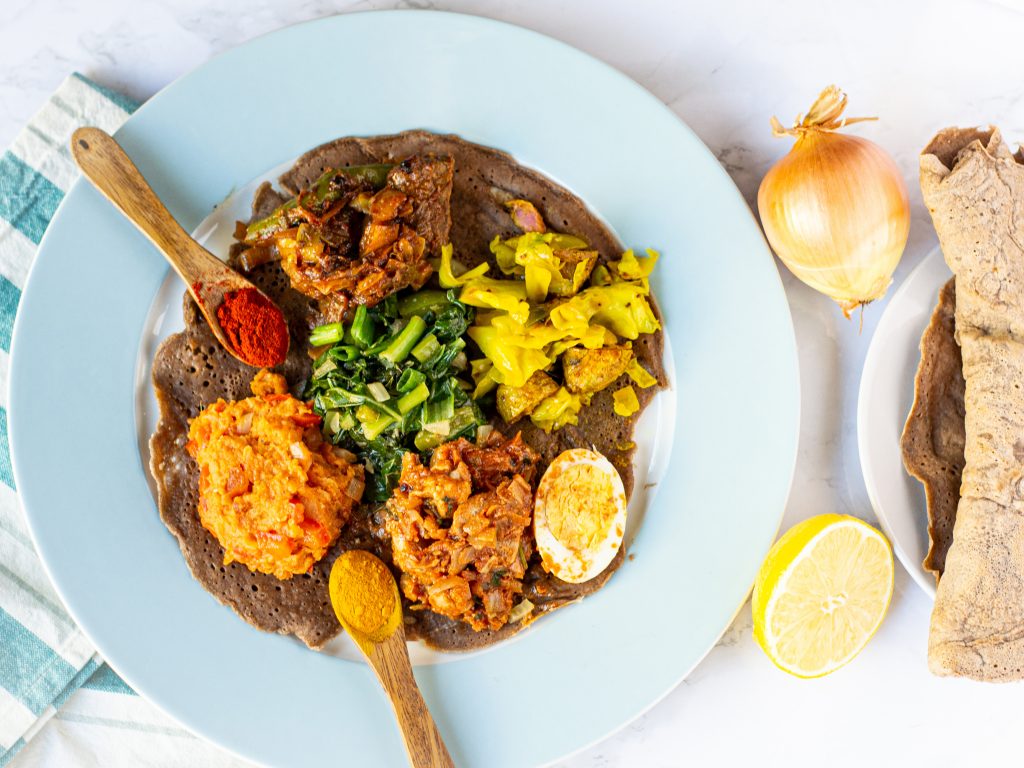
A few notes before we dive into the recipes:
- Our injera recipe is made the traditional way, with 2 days of fermentation. If you’re planning to make your Ethiopian recipes on a Saturday, make sure to start the injera process on Thursday (it’s very simple to set up and doesn’t require any effort while it ferments. There are other methods out there to make injera faster, but we prefer this way.
- The berbere spice blend is key to many dishes. You can find this spice at your local Ethiopian grocery store or get it online here. Same with teff flour, it can also be found here. Finally, for the remaining spices like the ones for the Infused Oil recipe, we just used our box of Indian Spices, which can be found here.
- The base of each dish starts with an infused oil. Before you start making your traditional Ethiopian recipes, first make your infused oil as described below.
- Let us know how your Ethiopian food turns out in the comments below! Feel free to post any of your special tips and tricks for making Ethiopian recipes, we’d love to hear them 🙂
Ethiopian Infused Oil Recipe
Pour about a cup of vegetable oil into a soucepan and set to low heat. Add the following ingredients to the oil: 2 cinnamon sticks, 3 garlic cloves, 3 bay leaves, 1 tsp freshly cracked pepper, 1/2 tsp whole cloves, and 5 cardamom pods.
Simmer this oil for at least 30 minutes as your prepare the ingredients for your Ethiopian recipes. Then start off each recipe by using some of this oil in a fresh pan or pot. It will also make your kitchen unbelievably fragrant.
6 Authentic Ethiopian Food Recipes:
1) Injera (Fermented Flatbread)
2) Atkilt Wot (Sautéed Vegetables)
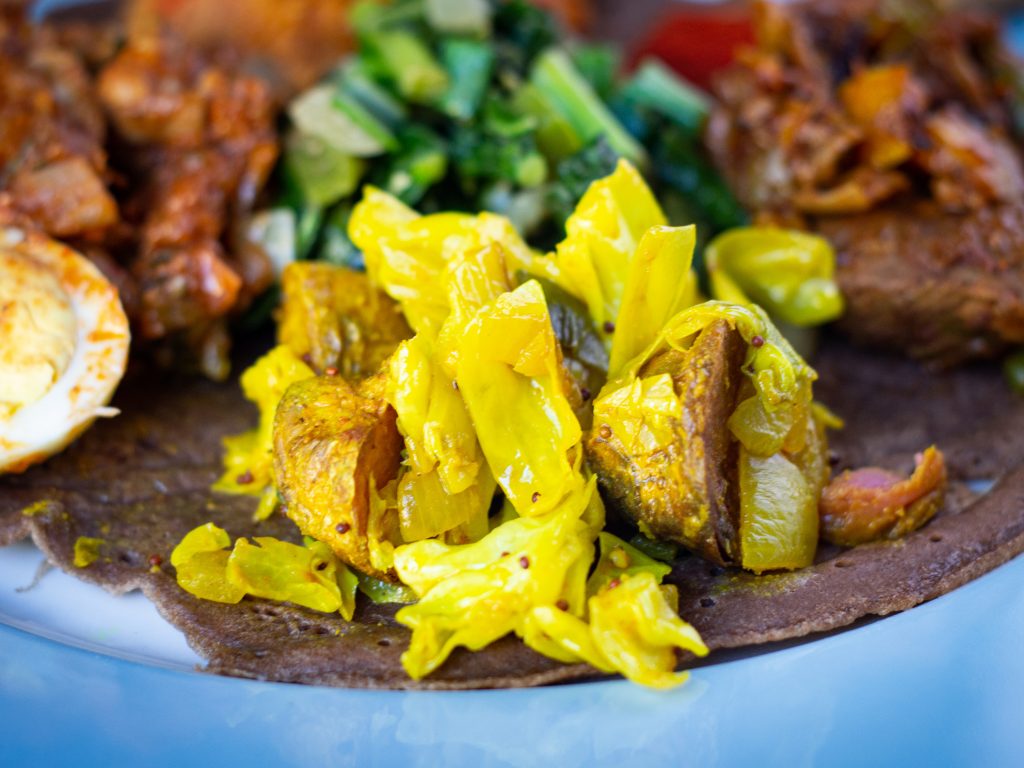
3) Doro Wot (Chicken Stew)
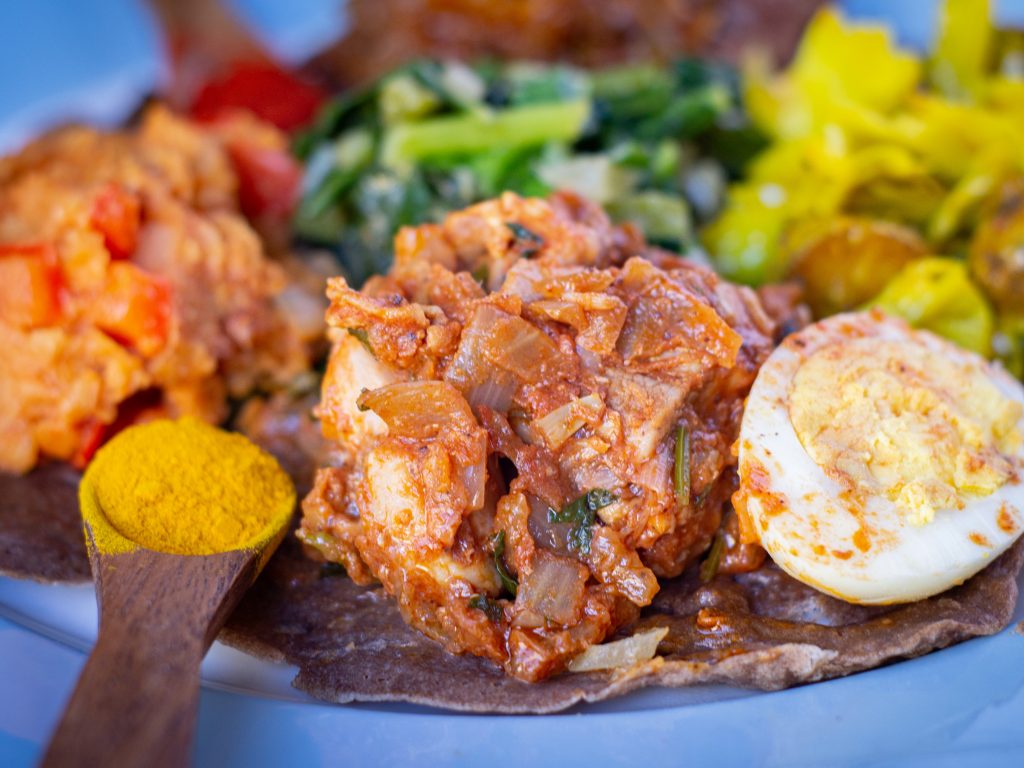
4) Siga Tibs (Beef Stew)
5) Ye’abesha Gomen (Collard Greens)

6) Misir Wot (Spiced Red Lentils)
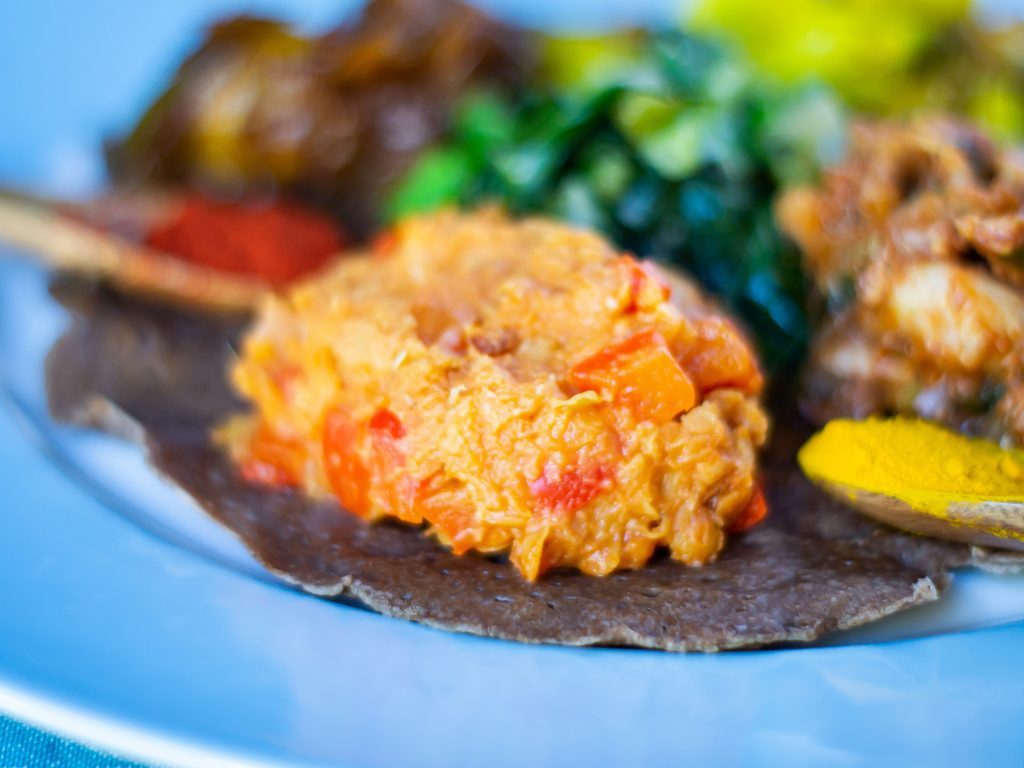
Journey Next to Morocco
Thank you for reading this article on Ethiopian Cuisine, we hope you enjoyed it! If so, continue expanding your repertoire and consider checking out a similar culinary guide we created recently, The Top 10 Moroccan Recipes.
Recommended Amazon Products for this Recipe:
This page may contain Amazon Affiliate links that earn us a small commission, at no additional cost to you. We only show products we personally use in our kitchen. See our disclaimer for more information.

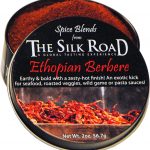


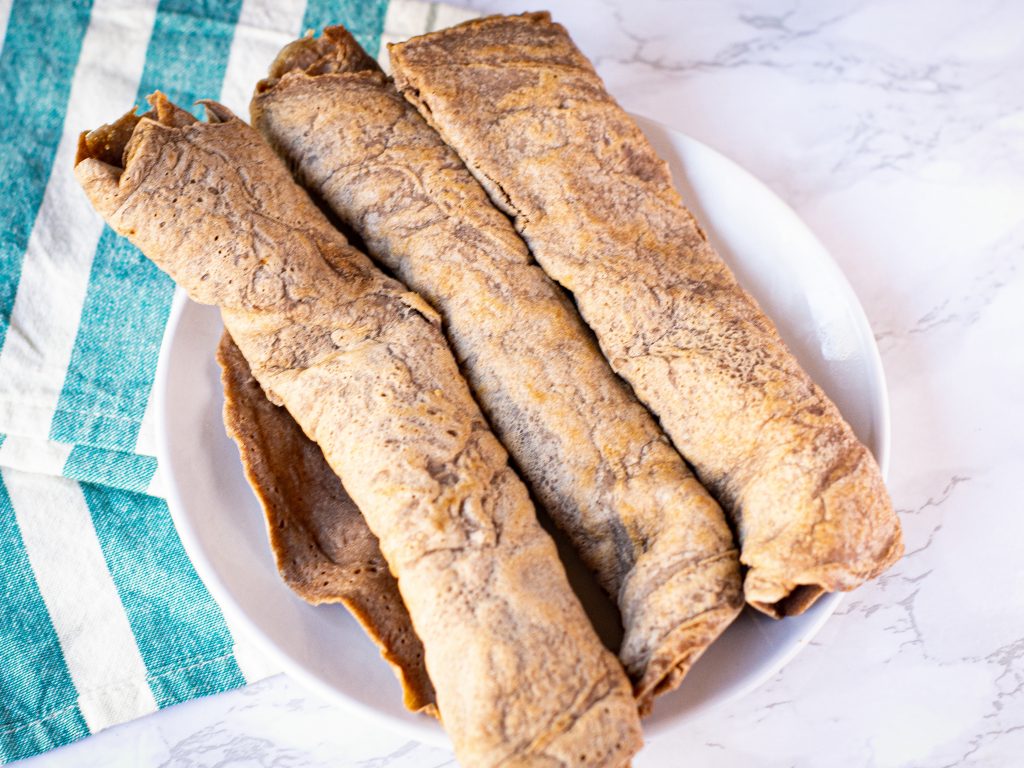
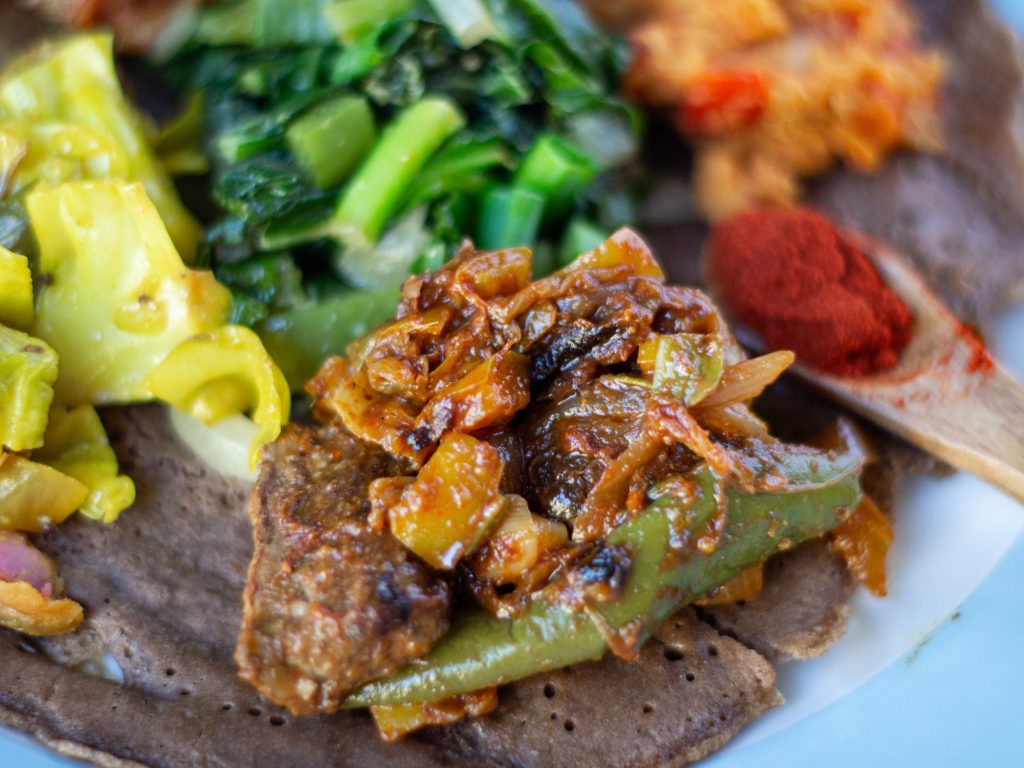

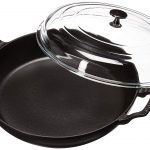
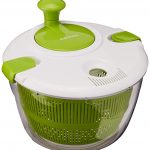
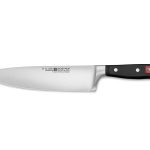
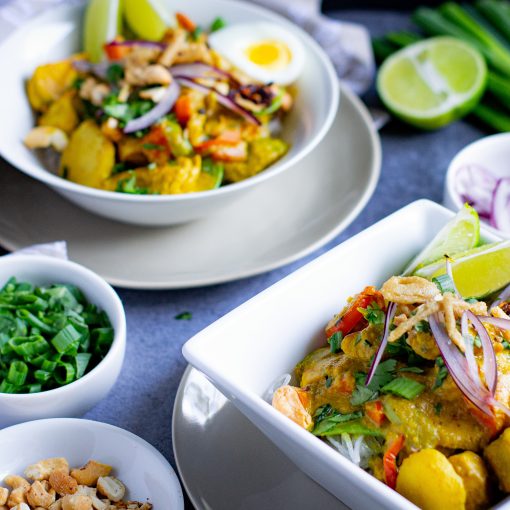
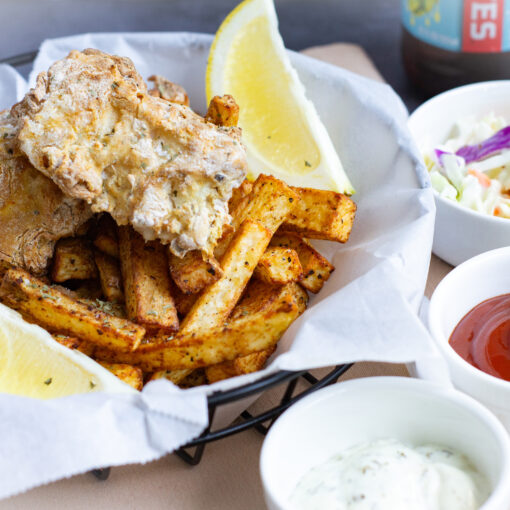
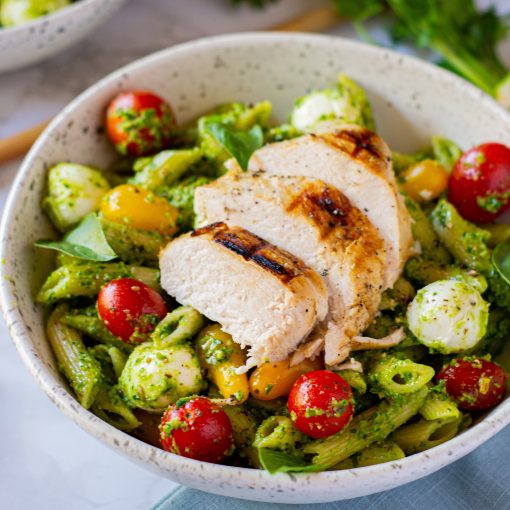
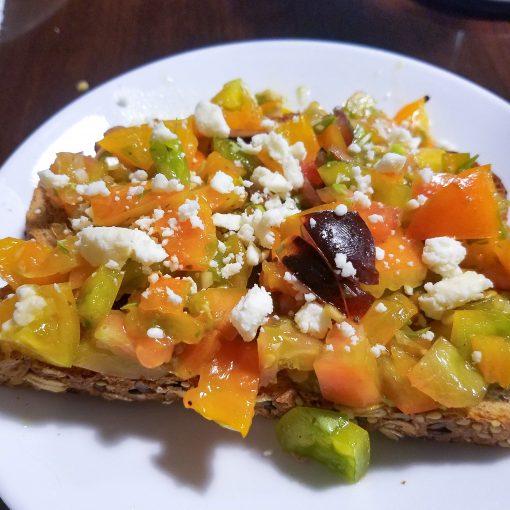

8 thoughts on “6 Easy Authentic Ethiopian Recipes”
I had no idea about this. Pretty interesting subject for sure though.
We agree! Such fun recipes to make 🙂